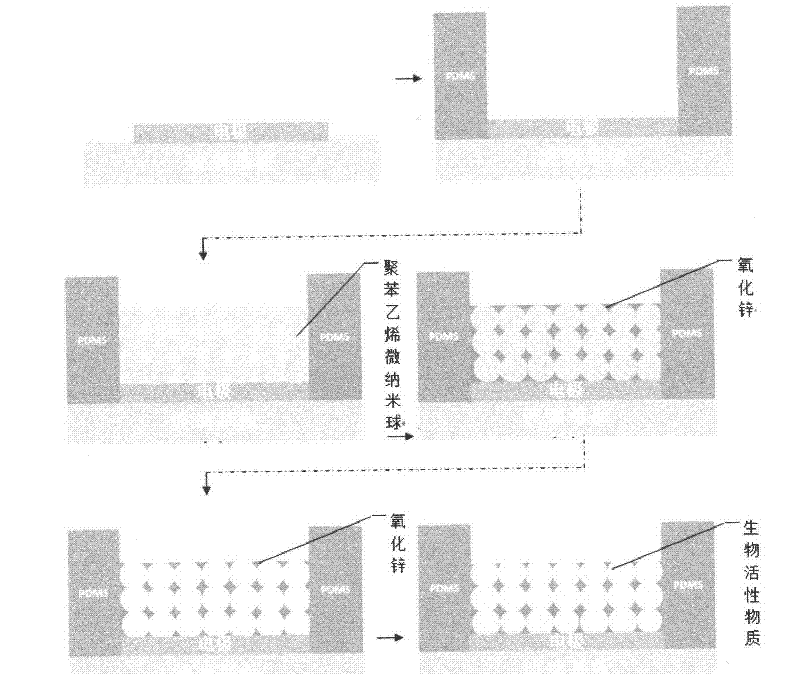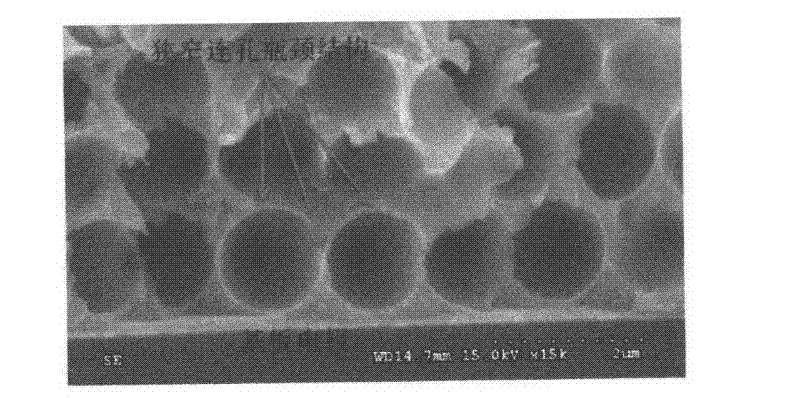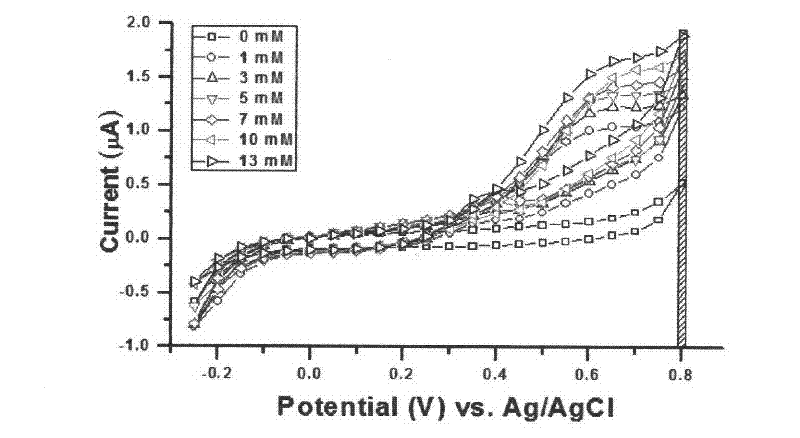Porous biosensor and making and application methods
A biosensor, pore-shaped technology, applied in the field of biosensors, can solve the problems of decreased sensitivity, poor stability, and small linear range of biosensors, and achieve enhanced electron transfer capability, high sensitivity and stability, and large linear range of measurement. Effect
- Summary
- Abstract
- Description
- Claims
- Application Information
AI Technical Summary
Problems solved by technology
Method used
Image
Examples
Embodiment Construction
[0028] The present invention will be further described below in conjunction with accompanying drawing:
[0029] The first is the fabrication method of the porous biosensor.
[0030] refer to figure 1 , making a porous biosensor mainly includes the following steps
[0031] Step 1: Fabrication of substrate electrodes. Electrode materials can be made of precious metals, graphite and other materials. Taking the production of noble metal electrodes as an example, firstly, a layer of noble metal is deposited on the surface of the glass substrate by evaporation coating equipment, and then the electrode array pattern is etched on the glass substrate by photolithography technology. connected to the voltammetry analysis circuit of the instrument.
[0032] Step 2: Fabrication of an array of wells in the polymer film layer well-shaped structure area. Attach a layer of polydimethylsiloxane (PDMS) film with a thickness of 1 mm (other thicknesses can be selected according to needs) on t...
PUM
| Property | Measurement | Unit |
|---|---|---|
| diameter | aaaaa | aaaaa |
Abstract
Description
Claims
Application Information
 Login to View More
Login to View More - R&D
- Intellectual Property
- Life Sciences
- Materials
- Tech Scout
- Unparalleled Data Quality
- Higher Quality Content
- 60% Fewer Hallucinations
Browse by: Latest US Patents, China's latest patents, Technical Efficacy Thesaurus, Application Domain, Technology Topic, Popular Technical Reports.
© 2025 PatSnap. All rights reserved.Legal|Privacy policy|Modern Slavery Act Transparency Statement|Sitemap|About US| Contact US: help@patsnap.com



